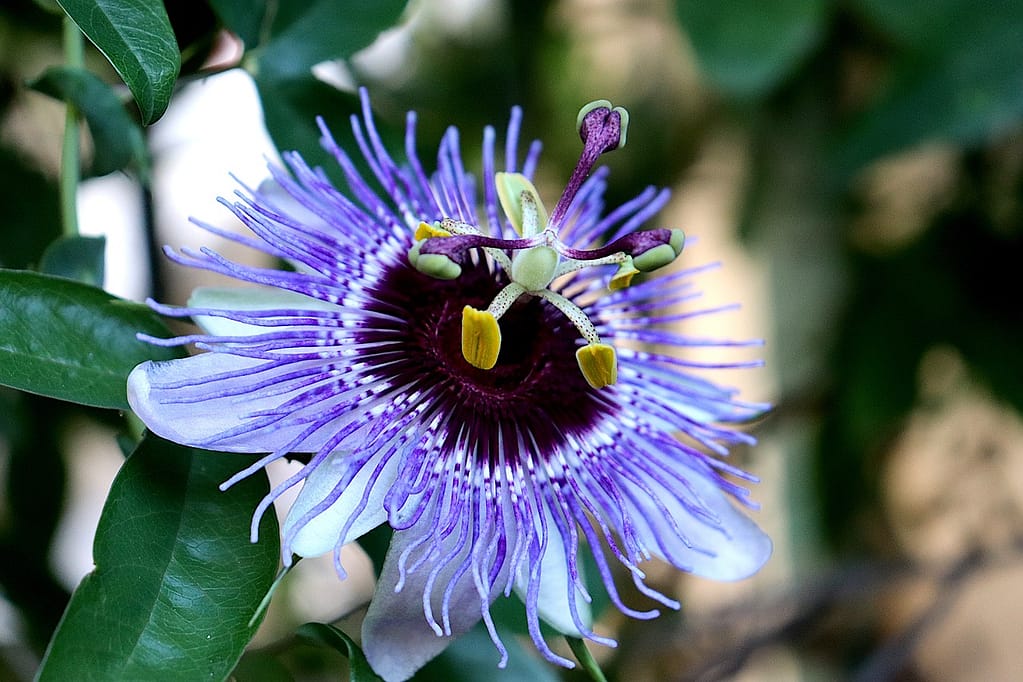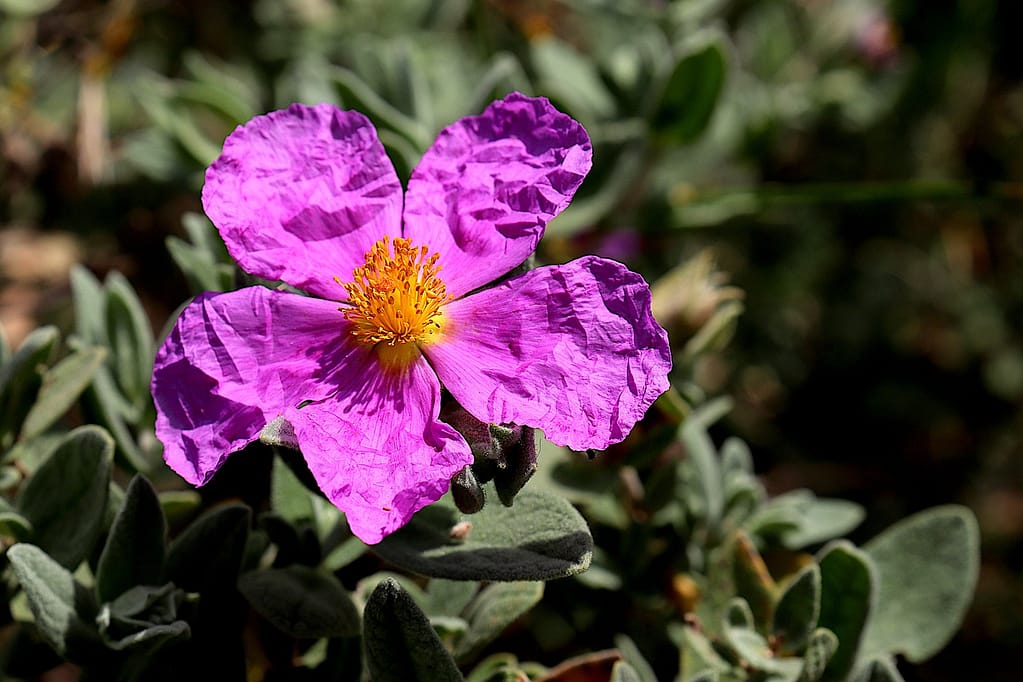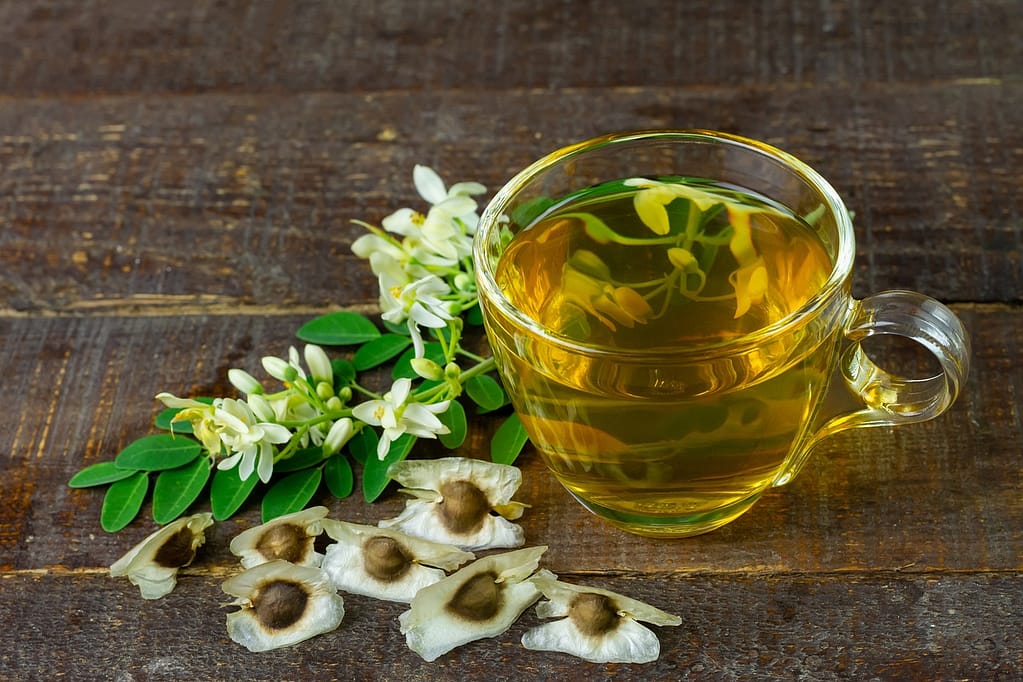5 Powerful Herbal Teas to Unlock Your Wellness
Looking for a nutrient-dense brew for healing, energy, or relaxation? We’ve got you covered! Discover below five exceptional herbal teas with extraordinary benefits that you can incorporate into your health journey for that little extra boost. Skip intro
Table of Contents
Overview
Not only do the herbs below make delicious teas, but they are also considered superior due to their unique antioxidant and nutrient content.
Some of these herbs are so nutrient-dense that a single cup can meet your Recommended Daily Allowance (RDA) for certain vitamins or minerals.
For instance, Schisandra berries provide 644% of your RDA for vitamin C in dried form. While Moringa leaves contain calcium levels 4x higher than milk, and potassium levels 3x higher than bananas.
These plants possess extraordinary antioxidant properties due to containing compounds not found in significant amounts anywhere else.
Antioxidants are powerful compounds, as they help combat oxidative stress, reducing the risk of diseases and ageing.
All the herbs listed below are rich in antioxidants and caffeine-free. They can be enjoyed as a flavourful tea or taken in concentrated forms like tinctures, capsules, or powders.
Links to reputable sources will be provided below.
Interested in optimising your health through natural remedies?
Intelligent targeted supplementation is a game-changer. Mindvalley’s The Ultimate Guide to Supplements course breaks down exactly how to choose the highest-quality, science-backed supplements to support your immunity, cognitive functions, and energy-levels.
Disclosure
As an Amazon Associate and Mindvalley Affiliate, I earn from qualifying purchases. Some of the links are affiliate links, meaning I earn a small commission if you purchase through them—at no extra cost to you. I only recommend products or courses I personally rate or think you’ll love!
1. Passionflower
Passionflower (Passiflora incarnata) might be the most relaxing plant you’ll find out there.
This striking plant contains several bioactive compounds with magical calming properties that promote relaxation and foster an overall sense of tranquility.[1]

Most importantly, Passionflower contains a compound called chrysin, which reduces neuronal excitability. Chrysin indirectly interacts with GABA receptors in our central nervous system, producing a calming, anti-anxiety effect.[2]
Passionflower can also help regulate serotonin levels in our brain, the “feel-good” neurotransmitter. It achieves this via increasing serotonin levels and positively influencing its activity. This further contributes to a feeling of well-being and relaxation.[3]
Anti-depressant properties have also been demonstrated, due to two plant compounds in passionflower called harmine and harmaline.[4]
Whilst another compound was shown to reduce tolerance and dependence related to cannabis use, nicotine addiction and withdrawal symptoms from alcoholism.[5]
Passionflower tea or supplements, therefore, could be a helpful aid for those managing substance withdrawal. It’s not just for those looking to unwind—it can also support those navigating more intense challenges, offering relief when needed most.
Serving Suggestions:
Passionflower tastes herbaceous, with faint floral notes. It comes as teabags or loose leaf when in need of a cup-of-chill. Supplements to keep it together on the regular, or extract form when a kick of daily-zen is required. (affiliate links)
2. Chaga
A fungus called Chaga (Inonotus obliquus) has recently gained popularity as an adaptogen
With nearly 1,000 years of documented use in Russian and Siberian folk medicine, there must be a good reason why.
Traditionally, it was used to treat digestive disorders, liver diseases, tumours, and as a health tonic to support wellbeing and energy levels.[6]
Scientific reports now confirm that Chaga’s health benefits are not just old folk tales.

Nowadays, Chaga is well-documented for its immune-modulating function, gastrointestinal support, and liver health.
Studies also support its anti-cancer properties, revealing that compounds in Chaga promote apoptosis (cell death) of cancer cells and inhibit their growth and spread.[7,8,9]
This can partly be explained by Chaga’s unique and astonishingly high antioxidant composition.[10,11]
However, betulinic acid may be the key player in Chaga’s fight against cancer.
Chaga contains an unusually large amount of betulinic acid, a potent anti-cancer compound, which it derives from the birch trees it typically grows on.
Additionally, Chaga contains rare compounds like inotodiol, found almost exclusively in this fungus, which further enhance its anti-inflammatory and anti-cancer properties.[12]
This alone would be a good-enough reason to incorporate Chaga tea into your daily health routine. But we haven’t even mentioned its rich nutritional profile.
Packed with vitamins (B1, B2, B3, D2, A, K) and minerals (potassium, calcium, magnesium, iron, manganese, and iodine).[13] Adding to Chaga’s booming popularity as an exceptional superfood.
Serving Suggestions:
Chaga tea has a very earthy, nutty, and wholesome flavour. It’s commonly sold in coffee-blends due to a similar taste-profile. Chaga also comes as a powder, which you can blend into your shakes, or as a supplement and tincture, for a high dose of this health booster. (affiliate links)
3. Cistus
Cistus (Cistus incanus), also known as Rock Rose, is a traditional herbal tea in the Mediterranean and Eastern Europe, and a personal favourite of mine.
As a herbal tea, it tastes as if rose tea and green tea had a baby.
No surprise, Cistus contains catechin, the same antioxidant predominantly found in green tea, and quercetin, kaempferol, and rutin—antioxidants in rose.[14,15,16]

And as you sip and savour this tea, you’ll also quickly notice—it has astringent properties.
It feels as if the tea “strips” away the inside of your mouth; in a good way. As if you had a thorough toothbrush, followed by a lengthy mouthwash!
Indeed, several studies have demonstrated that this tea is super handy for oral hygiene measures: from biofilm cleansing of the tongue, to throat and gum infection, it does it all.[17]
Intriguingly, studies also demonstrate that it helps the healing of stomach ulcers.[18]
However, not only is Cistus an excellent gut and oral specialist, it also shows promising anti-cancer properties.
Cistus is particularly high in ellagitannin, an antioxidant well-documented for its anti-cancer and anti-microbial properties.[19]
It also contains cistusin, a specific plant compound named after Cistus itself, which exhibits the highest antioxidant properties within this plant.[20]
This makes Cistus uniquely valuable in its healing properties by containing such rare and powerful antioxidants.
Serving Suggestions:
Cistus tea has a very delicious floral and green tea-like flavour—recommended both unflavoured or flavoured with honey and lemon. It’s available for purchase in teabag form or as loose leaves, and as an extract. (affiliate links)
4. Moringa
Moringa (Moringa oleifera), also known as the ‘miracle tree’ or ‘mother’s milk,’ is one of the most nutrient-dense plant known to humankind.
Also a personal favourite—this tea is so delightful that once you start drinking it, you don’t want to put that cup down.

This might be because Moringa is a true nutritional powerhouse. For example, Moringa leaves contain 4x more calcium than milk and 3x more potassium than bananas.
Moringa leaves are rich in vitamins (A, C, K, E, B1, B2, B6), with vitamin A content four times that of carrots, and vitamin C content seven times that of oranges.
The leaves also have an impressively high protein content of 20-30g per 100g in powder form, containing all nine essential amino acids and seven non-essential amino acids.[21]
This might be why, dating as far back as 150 B.C., Moringa was used by kings and queens to maintain mental alertness and achieve a healthy complexion.
While ancient Mauryan warriors of India consumed Moringa leaf extract during battle to boost energy, reduce stress and pain, and enhance wound healing.[22]
Additionally, Moringa has a probiotic effect and can help alleviate digestive issues by improving gut flora. Studies have shown that Moringa extract may aid in healing ulcers and support various forms of Irritable Bowel Disorders (IBD).[23]
Thus, this plant serves not only as a comprehensive health booster but also as an effective stomach soother.
Serving Suggestions:
Moringa tastes fresh, clean, and earthy. While its flavour can be quite intense on its own, it pairs beautifully with chamomile or green tea to create a more balanced, refreshing experience.
I’d recommend trying it as your new morning cuppa tea, to help start your day strong. You can also take it in supplement, powder, or extract form, if you’re looking for a concentrated form of this nutrition-burst. (affiliate links)
IMPORTANT NOTICE
Not recommended for pregnant women, or those wanting to get pregnant, as may have an abortogenic effect, due to its high levels of plant oestrogen (phytoestrogen). Moringa extract is currently being investigated as a potentially safe herbal contraceptive.[24]
5. Schisandra
Schisandra (Schisandra chinensis), also known as five-flavour berry (Wui Wei Zi), is a traditional Chinese medicinal plant, first documented in 1596.
Noted for its healing effects on the gastrointestinal, respiratory, and cardiovascular systems, as well as its ability to reduce fatigue and insomnia. In Russian folk medicine, it is also used to delay ageing and improve mental health.[25]
With its long history as an anti-ageing remedy, Schisandra has gained recognition as a powerful longevity-supporting adaptogen.
Modern research highlights its rich antioxidant profile and ability to combat oxidative stress—key factors in slowing cellular ageing.

The wide use of Schisandra for health benefits is likely due to its rich chemical composition.
So far, 202 compounds have been isolated, many of which are well-documented for their anti-cancer, anti-inflammatory, antioxidant, and neuroprotective properties, including memory preservation.[26]
Intriguingly, dozens of plant compounds unique to Schisandra were first identified and named after it (e.g.: schisandrin).
These compounds provide additional health benefits, including improved vision, antidepressant effects, liver protection (against hepatitis and cirrhosis), blood sugar regulation, and adaptogenic properties.[27]
One notable compound in Schisandra is anthocyanin, which gives the berries their vivid red colour.
This compound is also found in blueberries, blackberries, red wine, and purple potatoes. Clearly, anthocyanin doesn’t just provide colour; it’s a powerful antioxidant widely studied for its free-radical scavenging abilities and potent anti-cancer effects.[28,29]
Lastly, Schisandra’s incredibly high vitamin C content is worth noting.
One study found that 100g of fresh Schisandra berries contain 110mg of vitamin C, while dried berries provide 580mg per 100g—meeting 122% and 644% of the RDA, respectively.[30]
This study also concluded that these berries are super rich in minerals, offering 58% of the RDA for magnesium, 31% for zinc, and 27% for selenium.
Serving Suggestions:
This vibrant berry makes a delicious, colourful and fruity tea. It’s also available in powder form to blend into smoothies, as a capsule for quick release, or in extract form for an instant vitamin C boost. (affiliate links)
Interested in hacking your longevity beyond herbal teas?
Check out Mindvalley’s The Longevity Blueprint course with Ben Greenfield. This course offers a deep dive into biohacking techniques that help you slow cellular ageing, optimise energy levels, and improve your mental and physical wellbeing.
Final Words
Whether you’re exploring the calming properties of Passionflower with its soothing chrysin, energising yourself with nutrient-dense Moringa, or discovering the adaptogenic powers of Schisandra, each extraordinary herb offers both unique healing properties and a delightful flavor experience.
Behind each profile lies centuries of traditional wisdom—the remarkable chemical complexity of these plants, developed through millennia of coevolution with their environment.
These exceptional botanicals are nature’s gift, with their revered benefits now being validated by modern science, revealing how their potent compounds work in harmony with human physiology.
So next time you’re considering your wellness routine, why not incorporate one of these time-tested herbs?
From boosting immunity to supporting mental clarity, these botanical treasures offer both therapeutic benefits and delightful flavors that nature has perfected.




